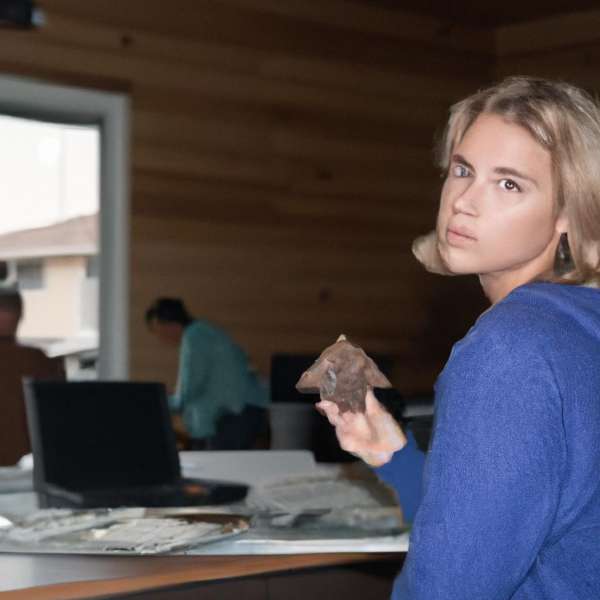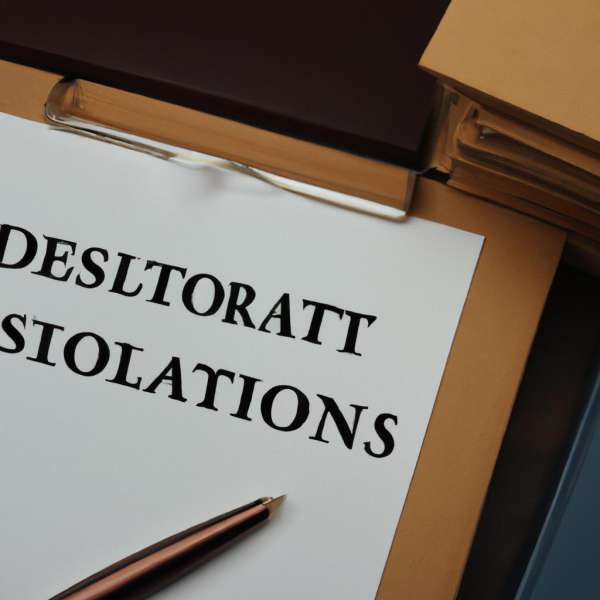Title: Navigating the Distribution of Personal Property: A Thoughtful Guide
When it comes to the distribution of personal property, the subject often conjures a swirl of emotions and considerations. Whether you’re planning for the inevitable or stepping into the delicate realm of inheritance, understanding how to approach this process can help alleviate stress and confusion for you and your loved ones. Personal property encompasses the tangible items that hold sentimental value, practical utility, and investment worth—from cherished family heirlooms to everyday possessions that tell your unique story. In this article, we will explore a step-by-step guide to effectively plan for the distribution of personal property, ensuring your wishes are clearly outlined and your legacy is honored. With thoughtful preparation and open communication, you can create a roadmap that respects both your desires and the feelings of those you leave behind, fostering harmony in a time that could otherwise become contentious. Join us as we delve into practical strategies, common pitfalls, and essential tips for a compassionate approach to sharing what you hold dear.

Understanding Your Personal Property and its Value
Personal property encompasses a wide range of items, from sentimental treasures to high-value assets. Understanding the full scope of your possessions is crucial when planning for their distribution. By taking inventory of what you own, you can better assess their value and significance, both emotionally and financially.
Begin by categorizing your personal property into distinct groups. This can help you visualize your assets more clearly:
- Sentimental Items: Family heirlooms, photographs, or gifts that hold emotional value.
- Valuable Assets: Jewelry, collectibles, or works of art with monetary worth.
- Practical Belongings: Furniture, electronics, and appliances that have everyday use.
- Specialized Items: Instruments, sports equipment, or vehicles that may have significant value to you.
Next, conduct an appraisal of these items. Valuing personal property can involve various methods:
- Professional Appraisal: Hiring an expert can give you a clear financial picture.
- Online Research: Check current market prices on platforms that deal in similar items.
- Insurance Valuation: Review previous appraisals for insurance purposes, as they often provide accurate valuations.
Maintaining an organized record of your findings is essential. Here’s a simple table to help you track your items and their estimated values:
| Item | Category | Estimated Value |
|---|---|---|
| Grandmother’s Necklace | Sentimental | $1,200 |
| Antique Vase | Valuable | $500 |
| Sofa Set | Practical | $700 |
| Guitar | Specialized | $300 |
By keeping a thorough record, you not only clarify the value of your personal property but also set a foundation for equitable distribution among your heirs. This proactive approach ensures that meaningful items are passed down according to your wishes, maintaining harmony and respect among family members during what can be a challenging time.

Creating a Comprehensive Inventory for Effective Distribution
Establishing a detailed inventory is essential for ensuring a smooth distribution process of personal property. Start by categorizing items into clear segments, which can help streamline management and facilitate effective allocation to beneficiaries. Some common categories to consider include:
- Financial Assets – bank accounts, stocks, bonds
- Real Estate – properties, land
- Personal Belongings – jewelry, art, vehicles
- Digital Assets – cryptocurrencies, digital accounts
- Sentimental Items – heirlooms, collectibles
Once categories are established, refine your inventory by documenting key details for each item. This includes the item’s condition, market value, and any associated liabilities. Taking a systematic approach can mitigate disputes and misunderstandings during distribution. A sample template for this process could look like this:
| Item | Category | Condition | Value |
|---|---|---|---|
| Family Heirloom Necklace | Sentimental Items | Good | $1,500 |
| 2020 Toyota Camry | Vehicles | Excellent | $22,000 |
| Investment Account | Financial Assets | N/A | $50,000 |
maintain an ongoing record of any alterations to property holdings prior to distribution. This practice reinforces transparency and aids beneficiaries in understanding the distribution dynamics. A comprehensive inventory not only serves the practical purpose of detailing assets but also enriches the legacy you leave behind, fostering clarity in what may otherwise become a tangled web of personal property distribution.

Legal Considerations and Documentation for Asset Distribution
When navigating the intricate world of asset distribution, an understanding of the legal landscape is crucial. Key documentation will not only guide your distribution process but also ensure that your wishes are respected. Begin with drafting a comprehensive will, which serves as the cornerstone of any estate plan. This document should clearly outline your intentions regarding personal property, specifying who will receive which items.
In addition to a will, consider creating a Power of Attorney. This allows you to designate a trusted individual to manage your affairs should you become incapacitated, ensuring that your wishes regarding asset distribution are honored without delay. It is also wise to explore establishing a Living Trust, which can help streamline the transfer of assets, bypassing the often cumbersome probate process.
To assist you in understanding the required documentation, here’s a simple table summarizing essential legal documents:
| Document | Purpose |
|---|---|
| Will | Designates asset distribution after death. |
| Power of Attorney | Assigns authority for decision-making during incapacity. |
| Living Trust | Allows for smoother asset transfer and management. |
Furthermore, obtaining legal advice is paramount. Each jurisdiction may have unique laws affecting wills, trusts, and asset distribution. Legal counsel can provide insights, help minimize estate taxes, and ensure that all documentation complies with local regulations. As you prepare to distribute your personal property, keeping thorough records of your assets and their intended recipients will also facilitate a smoother transition and mitigate potential conflicts among heirs.

Communicating Your Wishes to Family and Heirs
As you navigate the complexities of planning for the distribution of your personal property, effective communication with your family and heirs is essential. Open dialogues can help prevent misunderstandings and familial disputes, ensuring that your wishes are honored after you’re gone. Here are some strategies to consider:
- Hold Family Meetings: Organize informal gatherings where you can share your intentions regarding your assets. This creates an opportunity for discussion and allows family members to ask questions or express their thoughts.
- Draft a Letter: Write a heartfelt letter outlining your wishes. This document can serve as a personal reminder of your values and reasoning, helping your family understand your decisions better.
- Consult an Attorney: Enlisting a legal professional can provide clarity and assist in formalizing your wishes through wills or trusts. This ensures that your plans are binding and clearly articulated.
It may also be wise to develop a detailed inventory of your personal property. An organized list can facilitate discussions and enhance transparency among your heirs. Consider using the following table format to display your inventory:
| Item | Value | Beneficiary |
|---|---|---|
| Family Heirloom Necklace | $5,000 | Daughter |
| Vintage Guitar | $1,200 | Son |
| First Edition Book Collection | $3,500 | Nephew |
By creating a clear inventory, you not only clarify the distribution of assets but also open the floor for conversations about the meaning and significance behind these items. This proactive approach fosters understanding and respect among your loved ones, ultimately aiding in a smoother transfer of your personal property.
To Wrap It Up
As we draw the curtains on our exploration of planning for the distribution of personal property, we hope you’re equipped with the tools and insights needed to navigate this often-overlooked, yet crucial aspect of life. Remember, effective planning not only honors your wishes but also provides clarity and peace for your loved ones during what can be an emotionally challenging time.
While the journey may seem daunting, taking the first step—whether it’s having candid conversations, organizing your belongings, or consulting with a professional—paves the way for a smoother transition. Just as an artist carefully curates their collection, so too can you thoughtfully arrange your legacy, ensuring that the treasures you hold dear find their rightful place among those you cherish.
Ultimately, the key lies in communication, thoroughness, and, above all, compassion. By embracing this proactive approach, you not only leave behind a tangible inheritance but also a heartfelt message of love and consideration for those left behind. So, as you embark on this path, remember: the legacy you create is not merely about possessions, but about nurturing connections that endure, long after the final brushstroke has been made.


